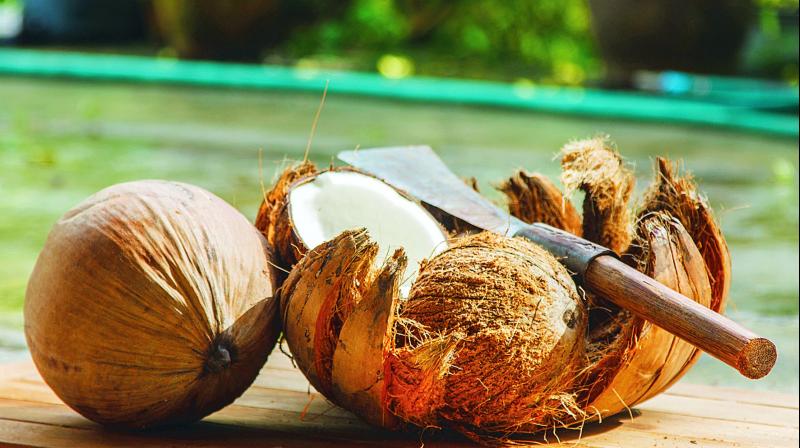Fungus to tackle pest menace developed

Rajahmundry: As the pest called ‘Rugose White Fly’ has become invasive and is affecting several horticulture crops like coconut, oil palm, nursery plants and others in East Godavari for the last several months, scientists from the Horticulture Research Station of Ambajipeta, have developed a ‘fungus’ to tackle the pest menace.
Horticulture farmers are raising coconut plantations in about 51,000 hectares area in several parts of East Godavari at present and nearly 25,000-30,000 farmers are involved in their cultivation for a very long time.
An average yield of coconut plantations is about 6,500 to 7,000 nuts per acre. The farmers have been facing the threat from the pest for the last several months as the pest has started invading their plantations and affecting the trees and the crop.
Coconut plantations located in Kothapeta, Ambajipeta, P. Gannavaram, Ainavilli and Amalapuram are badly affected while those in other parts show the impact of the pest.
Authorities say that once the pest attacks the coconut plantations, it affects the green portion of the leaves by eating it and this causes deficiency of nutrition resulting in the plant or tree becoming weak.
They want the horticulture farmers to identify such symptoms to the coconut plantations and start supplying water soluble fertiliser to supply nutrition to the plant so that it can survive without becoming extinct due to the pest attack. But the pest has started invading the crops badly affecting them.
With the pest becoming uncontrollable, the scientists from Horticulture Research Station have stepped in and developed a ‘fungus’ to tackle the pest menace.
Horticulture assistant director (Amalapuram) Ch. Srinivasulu said, “As the scientists have developed the fungus to tackle the pest called ‘Rugose White Fly’, we are going to organise an awareness programme for the affected farmers on how to use the fungus to tackle the pest menace. We are expecting to get good results.”
The authorities said that the farmers after being given an explanation about how to handle the pest menace, would be given a small portion of the fungus and the farmers in turn would have to multiply the fungus by using any of the methods explained to them so that they could use it in their plantations.

